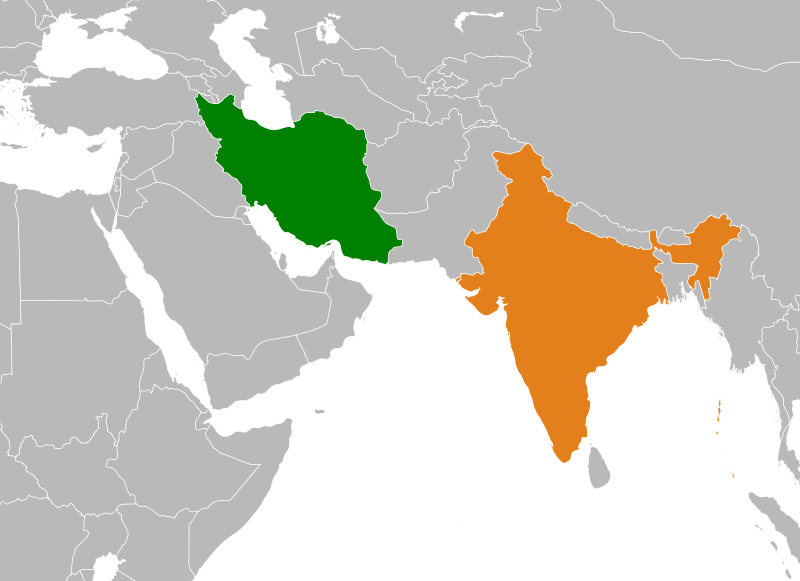The strategic shift of India
It may necessitate a significant revision of how we view escalating regional and global conflicts in Geopolitics.
Before making substantial changes to the non-alignment policy, a deeper introspection should be conducted because the former non-alignment policy had not done much to improve India’s image.
India and China
China and India are rivals in “civilization,” not in terms of geography. There may never be a “lips and teeth relationship” between the two nations, but given the history of the world, India has enough leeway to create a strategy that does not permanently close its borders to China.

Sandwiched between two Nuclear Giants
India’s strategic and foreign policy establishment cannot afford to overlook the nuclear aspect, given that the country is wedged between two active, and hostile, nuclear powers — China and Pakistan. India is the only one among the three that does not see nuclear weapons as intended for use in the event of a war. Nevertheless, it behooves India’s strategic and foreign policy establishment to consider how best to prevent ‘debilitating strategic instability’ — about China in particular — given the pace at which China’s nuclear arsenal is growing.
India’s Foreign policy shift: Non-Alignment to Multi-Alignment
In the backdrop of the recent Shanghai Cooperation Organization meeting, just attended by the prime minister. So accordingly this particular article highlights as to what challenges India would face and transition from policy of Non Alignment to policy of multi alignment.

India’s Challenges
What challenges India would face as it transitions from the policy of Non-alignment to that of the policy of Multi-Alignment .So if we go back to here 1947 that is when India gained independence, this was the time when the entire world as such was divided into two blocks, that is the Western Bloc led by USA and the other block led by USSR. So, most of the countries are either joint USA or USSR. So, as far as India is concerned, it was already ruled by the British for more than 200 years. So when it became independent, India wanted to ensure autonomy when it came to its economic policy or for that matter the foreign policy, so that is why India decided not to join either the USA or USSR and accordingly decided to follow an independent foreign policy. So that is why India after the year 1947 started following the policy of non-alignment.
As part of non-alignment policy, India decided to maintain equal distance from both the blocs and it also decided not to join any regional blocks, which will dilute its independence and autonomy with respect to formulation of the foreign policy. But now if you look at the current geopolitics, most of the foreign policy experts in the world believe that in the future the world will not be dominated by a single super power . The world’s geopolitics will be dominated by multiple poles or it could be multiple Regional Powers in the future. So future reality is we are slowly moving towards a multipolar world. So in the multipolar world we cannot afford to have an equal distance from the regional Powers. So we need to cultivate the relationship between the regional powers in order to protect our core interest and at the same time by pursuing our core interests we must maintain our strategic autonomy. For example, as part of the multi-alignment policy, we are actually strengthening our relationships with various countries which may be on the opposite side of the spectrum. For example, if you’re saying USA and Russia, even though both of these countries are on the opposite sides of the spectrum and they have a number of issues.
India has such a cultivated relationship between both USA and Russia, for example, with USA, we have signed a large number of defense agreements, just because we have signed these defense agreements with the USA does not mean that our relations with Russia has deteriorated. Russia has been our all weather friend but over the period of time our relations with the USA got strengthened.
Balancing West Asia and the Western Bloc
Looking at India, it has also been attempting to strengthen its bilateral relationships with both Iran and the Western bloc. In terms of Iran, India places a high value on the country. Iran’s importance lies in the completion of the Chabahar port, which is also important for us because we could obtain cheap crude oil. Even though there has been limited progress on both counts, India has been attempting to balance the relationship between Iran and the Western bloc.

India has also been trying to balance its bilateral relationship between Russia and the Arab powers. For example, India has recently joined this initiative that is I2U2 which includes India, Israel, Russia and USA which will help us to strengthen our relationship in West Asia and so on, since India has likewise concentrated on a number of locations. For instance, it has concentrated on the Indo-Pacific, East Asia through the East Asia strategy, Central Asia through the connection with Central Asia policy, and West Asia through the Act West policy.

India is focused on adhering to this multi-alignment policy while balancing the regional powers that are on the opposing end of the geopolitical spectrum and keeping in mind the current geopolitics.













